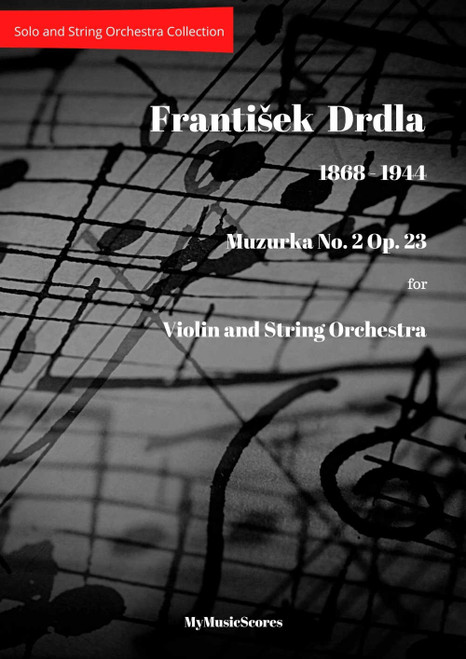Unleash a cascade of dazzling brilliance and playful charm with Sir Edward Elgar's captivating La Capricieuse, Op. 17, now exquisitely arranged for solo violin and string orchestra. This sparkling and virtuosic miniature, a beloved gem of the violin repertoire, is transformed into a thrilling orchestral experience, perfectly capturing its lighthearted spirit and technical flair.
Sir Edward Elgar (1857-1934), one of Britain's most cherished composers, originally conceived "La Capricieuse" for violin and piano. Its effervescent character and intricate violin writing quickly made it a popular concert and encore piece. This arrangement by Paul Wood meticulously expands the original piano accompaniment to a full string orchestra, enriching the harmonic textures and providing a dynamic, sympathetic backdrop that enhances the solo violin's commanding presence. It offers a practical and accessible option for soloists and ensembles who may not have access to a full symphony orchestra, allowing this delightful work to be performed more widely without sacrificing its intrinsic brilliance.
Key Features:
- Instrumentation: Violin Solo & String Orchestra (Violin I, Violin II, Viola, Cello, Contrabass)
- Original Instrumentation: Violin & Piano
- Difficulty: Advanced Violin Solo, Intermediate-Advanced String Orchestra
- Arranger: Paul Wood
- Fidelity: This arrangement remains true to Elgar's original solo line and the spirited character of "La Capricieuse," with a newly composed, sympathetic orchestral accompaniment.
- Contents: PDF File of full Score and all individual instrumental parts provided.
Elgar's La Capricieuse Op. 17 is renowned for its dazzling display of violinistic agility, its charming melodies, and its irresistible energy. This arrangement brings those qualities to the forefront, offering a truly rewarding experience for the advanced violin soloist and providing a substantial, engaging piece for intermediate-advanced string orchestras.
Elevate your repertoire with this exciting and beautifully orchestrated version of an English classic.
Perfect for: Concert programmes, advanced student recitals, and orchestras seeking an exhilarating, technically brilliant, and audience-pleasing showpiece for violin.
Would you like a printed edition of this score?
We've partnered up with JWPepper. They will print and ship your score for you.
Click here to get a printed edition of this score.












